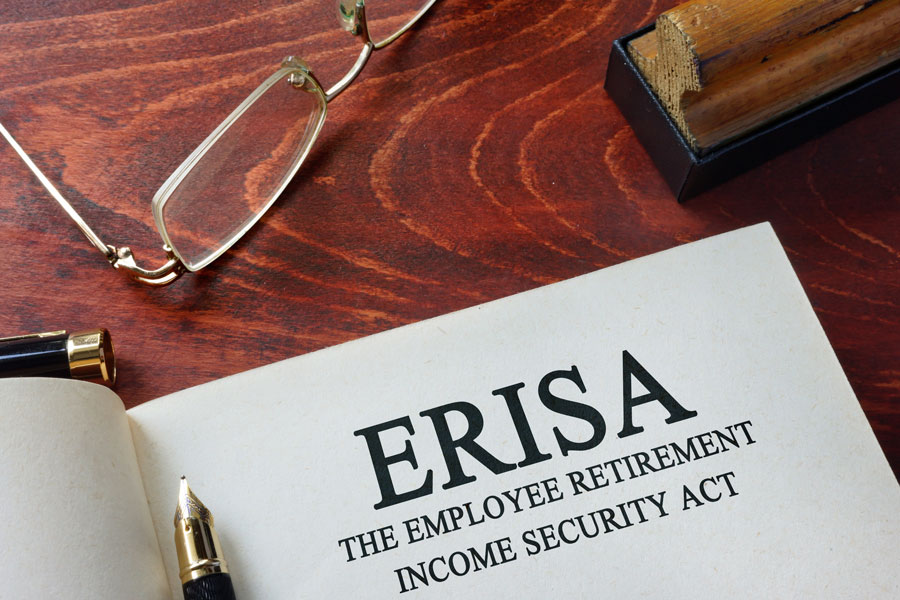
In the world of health insurance regulation, there is a wide array of document requirements and mandated disclosures. Among these requirements is a written instrument governing the operation of an ERISA plan (known as the “Plan Document”) as well as a Summary Plan Description (“SPD”) summarizing what the ERISA plan entails. The Plan Document and SPD must be created for every ERISA pension plan and welfare plan—welfare plans include health benefits, disability benefits, death benefits, prepaid legal services, vacation benefits, day care centers, scholarship funds, apprenticeship and training benefits, or other similar benefits.
Rather than meeting these requirements with two separate documents, there seems to be a trend of providing one document to participants, which combines the Plan Document and SPD. This combined approach includes all that a plan entails, including the requirements set forth for an SPD. This trend possibly results from employers trying to maximize efficiency, because rather than handling many different documents, potentially causing an inadvertent inconsistency, an employer would have one comprehensive document to maintain and distribute.
This blog addresses the concerns with the combined approach despite its potential for efficiency. It draws attention to the Department of Labor’s (“DOL”) description of these documents, explains what ERISA requires, and discusses the potential conflict between this trend and the law.
First, looking at the statute, ERISA requires that “[e]very employee benefit plan shall be established and maintained pursuant to a written instrument.” 29 U.S.C. § 1102. As noted, this written instrument is known as the Plan Document, which broadly encompasses everything a plan contains. The DOL further clarifies that the Plan Document should consist of all documents that make up a plan—the latest updated SPD, latest Form 5500, trust agreement, and other instruments under which the plan is established or operated—thus creating an inherently complicated document.
The SPD, on the other hand, has specific statutory requirements that call for summarizing the Plan Document. It is thoroughly addressed under ERISA, as the statute specifically sets forth a particular section for its requirements: “Contents of Summary Plan Description.” See 29 CFR 2520.102-3. The idea of addressing what must specifically be included in an SPD is to guide employers in creating a document that informs participants and beneficiaries of the overall plan without bombarding them with the complicated information that is the Plan Document. Further emphasizing this idea is the format requirement for an SPD under ERISA, which states that the SPD “shall be written in a manner calculated to be understood by the average plan participant.” 29 CFR 2520.102-2. The concern with having a very long Plan Document/SPD is that employers run the risk of not complying with this requirement.
Second, looking at case law, the Supreme Court has stated: “[W]e cannot agree that the terms of statutorily required plan summaries (or summaries of plan modifications) necessarily may be enforced (under § 502(a)(1)(B)) as the terms of the plan itself.” CIGNA Corp. v. Amara, 563 U.S. 421, 436 (2011). Section 502(a)(1)(B) refers to the enforcement of rights participants or beneficiaries have under a plan. This provision states:
A civil action may be brought—
(1) by a participant or beneficiary—
(B) to recover benefits due to him under the terms of his plan, to enforce his rights under the terms of the plan, or to clarify his rights to future benefits under the terms of the plan. 29 U.S.C. § 1132.
The Supreme Court’s assertion denotes that “the terms of the plan” referenced in § 502(a)(1)(B) do not refer to the terms under any summary of the plan (e.g. the SPD). Rather, these terms refer to the plan itself—the Plan Document. The Court distinguishes between these two documents in its assertion, clarifying that they are in fact separate. This point was emphasized again in the case when the Court stated: “[T]he summary documents, important as they are, provide communication with beneficiaries about the plan, but that their statements do not themselves constitute the terms of the plan for purposes of § 502(a)(1)(B).” Id. at 438.
Finally, the time requirements for distribution of these documents signifies a distinction. The DOL states that the SPD must be given “[a]utomatically to participants within 90 days of becoming covered by the plan and to pension plan beneficiaries within 90 days after first receiving benefits.” Copies of the Plan Document, on the other hand, “must be furnished no later than 30 days after a written request.” See the following Reporting and Disclosure Guide from the DOL:
Thus, while the combined approach might appeal to businesses as a means to consolidate information into one comprehensive document, the statutory provisions under ERISA, the DOL’s language regarding these documents, and the Supreme Court’s reference to these documents as distinct from one another should be considered when drafting ERISA plan material.
The attorneys at De Leon & Washburn, P.C. are available to assist clients and out-of-state counsel with group health plans, ERISA, and other insurance regulatory matters. For more information regarding the firm’s services, please visit our Practice Areas page, and please feel free to contact the attorneys at any time.
______________________________________________________________________________
© De Leon & Washburn, P.C. This article is provided for informational purposes only. It is not intended as legal advice nor does it create an attorney-client relationship between De Leon & Washburn, P.C. or its lawyers and any readers or recipients. Readers should consult an attorney of their own choosing to discuss how these matters relate to their individual circumstances. Articles are not continuously updated, so information may become out-of-date. Reproduction in whole or in part is prohibited without the express written consent of De Leon & Washburn, P.C.
